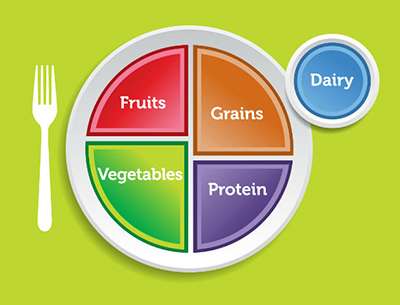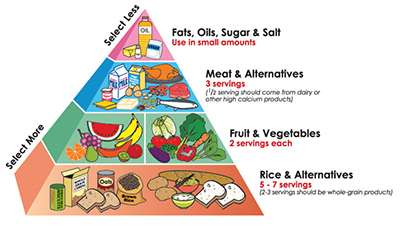The Problem With Nudging People to Happiness
Cass Sunstein's latest book puts a lot of faith in the efficacy of government to structure our choices.

On Freedom, by Cass R. Sunstein, Princeton University Press, 136 pages, $12.95
Just as a building has a structure that allows the people within it to pursue their own happiness without obstructing the movements of others, a free society has a structure defined by the natural rights of first possession, private property, freedom of contract, restitution, and self-defense. These rights—all of which can be loosely characterized as "property rights"—distinguish liberty from license. License is the freedom to do whatever you desire. Liberty is the freedom to do whatever you desire with what, according to these principles, is rightfully yours.
In the Hobbesian state of nature, liberty is conceived as the liberty do anything at all, including the freedom to use other people's bodies. So government is needed to limit this liberty to avoid life being solitary, nasty, and short. By contrast, the Lockean state of nature "has a law of nature to govern it, which obliges every one: and reason, which is that law, teaches all mankind, who will but consult it, that being all equal and independent, no one ought to harm another in his life, health, liberty, or possessions." Government, then, exists not to limit liberty but to protect it better than each of us can do on our own.
When speaking of freedom in the abstract, it is essential to know to which freedom one refers. The title of Cass Sunstein's small and provocative new book, On Freedom, is therefore ambiguous. Does he mean unrestricted freedom that must be shaped or limited by government? Or does he mean a liberty bounded by rights that government is tasked to secure?
Sunstein is a progressive liberal. He genuinely cares about individual freedom. But like all progressives, he thinks "we" can do better than merely protecting the rights of individuals and letting the spontaneous order of human actions develop from there. The best and the brightest should intervene to improve outcomes.
Sunstein's distinctive contribution concerns the nature of that intervention. Most progressives, like Hobbes, believe that freedom must be constrained by force to "make the world a better place." Indeed, many seem to believe that anything that is not prohibited by the state should be mandated. Sunstein, instead, has long favored "nudging" over jailing and fining. On Freedom is an accessible introduction to how he approaches social problems—and a constructive challenge for libertarians.
The book disclaims any effort to "explore the differences between 'negative freedom' and 'positive freedom';…make a final judgment about Mill's Harm Principle; or investigate the claim that property rights, conferred by the state, can be essential to freedom, or an abridgment of freedom." In short, Sunstein attempts to discuss "freedom" abstracted from the essential concepts that are necessary to govern its exercise. That's a big problem, though it does not render the book without value.
Sunstein effectively challenges us to consider how individuals can be made better off, by their own lights, not by coercing them in ways that violate their rights but by structuring their environment in ways that lead them to make the choices that will end up pleasing them the most. His approach builds on the insight that most decisions are already structured by the ways that options are presented to us. From grocery store layouts with end-cap specials to websites featuring seductive links and advertisements, we are constantly and inevitably being nudged in a thousand different directions. We're free to resist these nudges, but we usually do not. So, Sunstein proposes, we might as well think about how best to nudge people to make good choices.
One revealing example he offers is the "food pyramid" designed by the federal Department of Agriculture (USDA). The idea was to nudge people to exercise their freedom to make healthier dietary choices, with the assistance of (mandatory) nutritional information on all packaged foodstuffs. Here is the pyramid as it appears in the book:

According to Sunstein, the problem with this pyramid is that it "is organized by five stripes. (Or is it seven?) What do they connote? At the bottom, you can see a lot of different foods. But it's a mess. Some of the foods appear to fall into several categories. Are some grains or vegetables?" For Sunstein, the obvious problem is that people "are unlikely to change their behavior if they do not know what to do." Thus, the government "consulted with a wide range of experts, with backgrounds in both nutrition and communication, to explore what kind of icon might be better." In 2011, they came up with this:

The plate "doesn't require anyone to do anything," Sunstein says. Instead, "it makes clear that if half your plate is fruits and vegetables, you'll be doing well, and if the rest of your plate is divided between rice and meat (or some other protein), you're likely to be having a healthy meal." What could go wrong?
But Sunstein starts his story in the middle, with the "new" food pyramid that was introduced in 2005. He neglects the original, promulgated by the USDA in 1992:

That pyramid recommended seven servings of good old carbs such as bread, pasta, and potatoes for every three servings of protein. It lumped fats, oils, and salts together with sugars. (The latter, we now know, is made by your body from all the bread and pasta you're eating.) Unsurprisingly, because it was issued by a government agency, the content was heavily influenced by food industry groups. Many nutritionists now blame it for fattening Americans like cattle, leading to chronic obesity, diabetes, and possibly even an explosion of dementia. Oops.
Of course, the new high-protein, low-carb recommendations might be as wrong as the old low-fat, high-carb diets. But let's say, for the sake of argument, that the new diet is right. (I'm now 30 pounds lighter because of it.) If so, generations of Americans—and the whole food industry—were "nudged" astray for decades to the detriment of their health.
What, Sunstein would respond, is the alternative? If choices are to be made, should they not be made with the best information currently at hand?
One obvious option is not to let a bigfoot like the Department of Agriculture do the nudging. Another would be to have more respect for spontaneous order, which in this case was the traditional American diet of meats, cheeses, and a side of veggies. Instead, we were urged toward a diet of partially hydrogenated fats as an alternative to supposedly unhealthy butter—"trans" fats that later were banned entirely.
"Let the market decide" is not necessarily a recipe for correct answers. But a decentralized order of freedom within the boundaries of our legally protected rights allows a diversity of choices from which better results can emerge "as if by an invisible hand." Knowledge can evolve instead of being stipulated by a Leviathan. Labeling is fine; consumers cannot identify for themselves what's put into processed food. But food recommendations—nudging—by enlightened experts empaneled by the government has been as likely to be wrong as to be right.
When I was a research fellow at the University of Chicago Law School, my office was next to Sunstein's, who was then in his first year of teaching. We became good friends. During one of our many conversations, I recall him asking what I would say if one of the greatest thinkers of the 20th century turned out to be Jürgen Habermas and not Friedrich Hayek.
Since then, Sunstein has become a bigger fan of Hayek. In this book, he quotes the Austrian economist as saying that "the awareness of our irremediable ignorance of most of what is known to somebody [who is the chooser] is the chief basis of the argument for liberty." And yet, Sunstein asks, "Might people's freedom of choice fail to promote their own well-being" from the perspective of their own desires? "Every member of the human species knows that the answer is sometimes yes." So he proposes nudging people to make the choices that will better achieve their own goals.
I would like to see him seriously confront the problem of knowing how to nudge people to get what they want. He might then consider whether government experts, panels, and boards will always have the interests of the people, rather than those of powerful interest groups, in mind. On Freedom is a stimulating read that should nudge libertarians to stop and think harder about nudging. But it could use a little more Hayek and a little less Big Mother.
